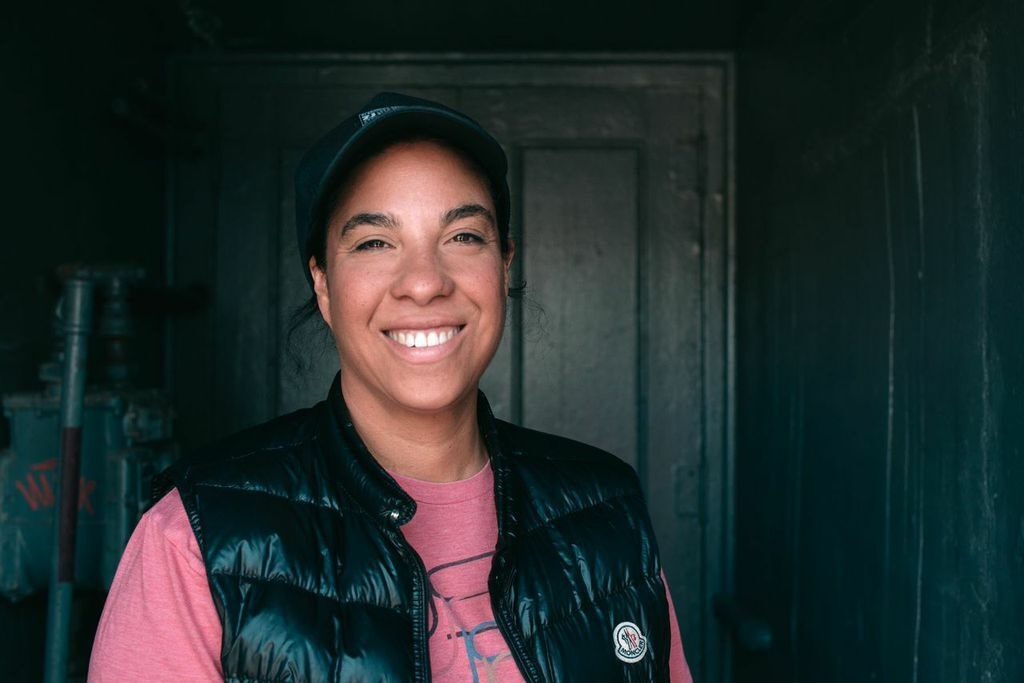The intriguing and fascinating origin-story of our Amazon superhero in ‘Professor Marston and the Wonder Women.’
Fresh off its world premiere at the world-renowned—and elite—Toronto International Film Festival, Professor Marston and the Wonder Women is creating serious buzz. The film shows the lives of the three people who were the driving force behind the creation of the iconic superhero, Wonder Woman.
Writer/director Angela Robinson (DEBS, The L Word, True Blood, How to Get Away With Murder) had always been a lifelong fan of the beloved comic. Almost a decade ago she came across startling facts about the origins of the superhero that stuck in her mind.
In a Wonder Woman history book, Robinson had discovered a discussion on the creator, Dr. William Moulton Marston (played in the film by Luke Evans), and the sexual bondage controversy surrounding the Wonder Woman comics and his polyamorous relationship with his wife, Elizabeth Marston (Rebecca Hall) and one of his college students, Olive Bryne (Bella Heathcote). And thus the magical journey began.
The once unexamined life of Dr. William Moulton Marston was quite an incredible journey and adventure. He didn’t want to join in on the superhero craze that was taking the nation by storm but, instead, wanted to show the world that a woman could have the same amount of power and strength as her male superhero counterparts.
Marston wasn’t even a writer. He was a psychologist, with a Harvard Ph.D., and the inventor of the lie detector machine. One may ask how he came to write one of the most famous comics of all time with a background like that. But he incorporated his very own life experiences into the iconic and beloved character.
Marston was a feminist who developed the concept of the DISC Theory—a behavioral tool that shows us that all human interaction is broken down into four behaviors: dominance, inducement, submission and compliance. The essence of Wonder Woman stems directly from this theory while embodying a part of Marston himself and the women he loved.
The film closely examines the love these three individuals had for one another and the prices they had to pay for their unconventional ideas. “This was a truly organic love story between three people,” Robinson told Curve from the Toronto International Film Festival. “Their love was like a tripod. If one leg fails it would topple over and break.”
While researching new ways to perfect the lie detector machine through the use of monitoring the human body, Marston and Elizabeth enlist the help of Olive, the eager student in Marston’s psychology class. The three begin to question their feelings toward one another, which causes a slight rift at first but quickly escalates to a full-scale passionate romance when their attractions ignite one late evening at the university.
Once being found out, they were excused from their positions in academia, which compromised their research and livelihood; but they persevered. The thruple moved to the New York City suburbs where they began to harness the family element of their relationship and started having children.
“This relationship was so contemporary for the time,” said Robinson. “It was really important not to label their relationship either. There weren’t identities. It was a modern interpretation.”
Marston took each of Elizabeth and Olive’s vivacious traits and transformed them into one woman, that he created and penned, which led to the explosive and iconic character of Wonder Woman. “These two women were profound with sexuality,” said Robinson. “It infused into Wonder Woman’s DNA.”
The sexuality of the comic became too much for censorship boards and Marston was put under scrutiny for the overall theme of the comic, specifically her golden rope that signified bondage and dominance.
In order to explore the bondage element of the Marston triangular relationship, Robinson recruited the help of female dominatrices, “because I wanted it to be explained from a woman’s perspective and to include the emotional and intellectual reasons Marston found it attractive.”
While being an attractive, and influential, idea to our three protagonists the unfortunate reality of the time period condemned them for such practices and behaviors. With the fear of what society may think of them lodged in the back of their minds, the three ultimately persevered through the endless struggles.
Robinson is successful in showing a true polyamorous relationship that stood the test of time. The power exchange from each character flows through the film with ease, which shines brightly in the superhero we know today. The strength of Wonder Woman wouldn’t have happened without this tripod of a bond and the romance it had ignited.
Professor Marston and the Wonder Women shows truth and complete dedication to one’s beliefs. These three are absolute relationship goals. They have a longing to be with one another, they respect each other and they value each other on the highest pedestal.
In an age where we feel like the times are headed backwards and being a woman means you have to fight for equality all over again, Robinson shows us that women hold the power. We are valid. We are strong. When asked what she thought the definition of a “wonder woman” was she simply responded with, “take out the wonder and you’ll have your answer.”
